

Zero Over Time Decarbonization Planning
Nonantum Village Place Apartments
Location: Newton, MA • Size: 35-unit apartment building • Owner: CASCAP Inc/Homeowners Rehab Inc.
PROJECT BACKGROUND
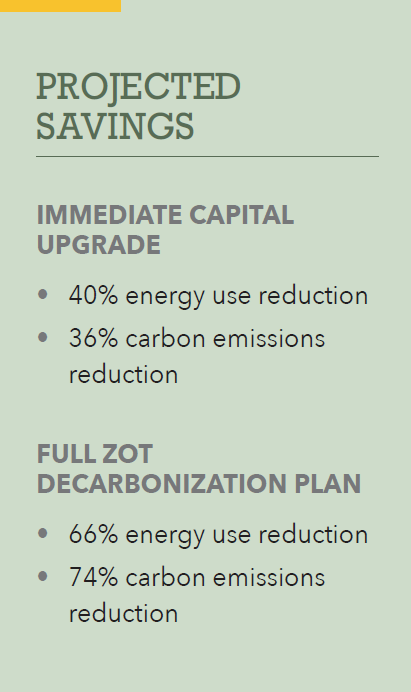
SOLUTIONS AND FEATURES

Above: A full roof replacement was needed, including insulating to R-50.
Below: Installation of a white roof membrane in preparation of a future solar PV system.
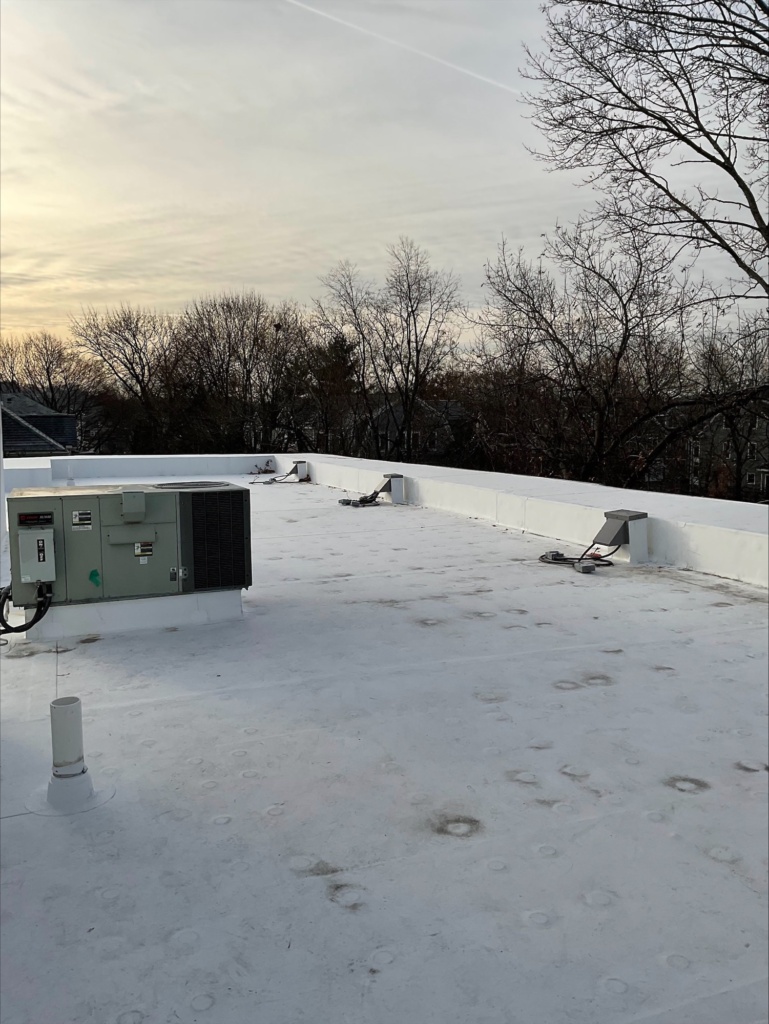
*Cascap/HRI expects to utilize the Massachusetts SMART program, which results in a transfer of the emission reduction benefits (Renewable Energy Certificates or RECs) to the utility for a financial payment. As such, the property will see a reduction in the consumption/cost of electricity from the solar system, but no direct emissions reduction benefit.
Nonantum Village is an apartment building in Newton, Massachusetts for low-income elders. Built in 2004 with support of the HUD Section 202 Elderly Supportive Housing program, the 23,953 square foot building includes 35 one-bedroom, fully handicapped accessible units that allow residents to age in place comfortably and in community.
Several major components and systems in the building had reached the end of their useful life and needed replacement/repair. Leveraging the pending capital upgrades to deliver energy efficiency and decarbonization was a priority for this project. Qualifying for financial resources from the LEAN Multifamily income-eligible utility energy efficiency program was also critical to fully fund the project.
New Ecology, Inc. worked with the owner’s design/build team to develop a financially feasible building decarbonization plan that aligned the near-term capital improvements with targeted upgrades to be accomplished over the next 10 years to fully transition the building off fossil fuel, improve energy efficiency and maintain operating affordability.
Systems/Components in Need of Replacement
- Roof
- Siding and trim repairs
- Cooling units serving apartments
- Apartment-based heating/cooling distribution system
- Common area HVAC equipment

Short-Term Capital Project Efficiency Measures:
- Replace Degraded Roof: Repair moisture damage, increase insulation to R-50, and install white membrane in preparation of a future photovoltaic system.
- Install Air Source Heat Pumps: Replace existing cooling units on roof with air source heat pumps (1 per apartment) that can provide cooling in the summer and efficient electrified heating during favorable outdoor winter air temperatures. Existing central gas-fired boilers still have useful life and will continue to provide building domestic hot water as well as heating to residents during low temperature winter conditions when the air source heat pumps would be least efficient/most expensive to operate. A two-stage controller will ensure that the proper system is providing heat to the units based on outdoor air temperature.
- Replace Common Area HVAC Units: Replace existing gas fired rooftop units that provide heating, cooling and ventilation to building common areas with high efficiency all-electric units.
- Solar + Storage: Install 35kW PV System and 22.9 kWh battery storage for resilience and operating cost savings.
Zero Over Time Plan
In addition to the measures being integrated as part of the capital project, NEI developed a list of prioritized measures to implement over time. These measures and the timing of their implementation, shown in the following table, were based on the end of useful life of building systems and components, anticipated operating and replacement reserve resource availability, and assumed decarbonization/greening of the electrical grid in alignment with state-based regulations.
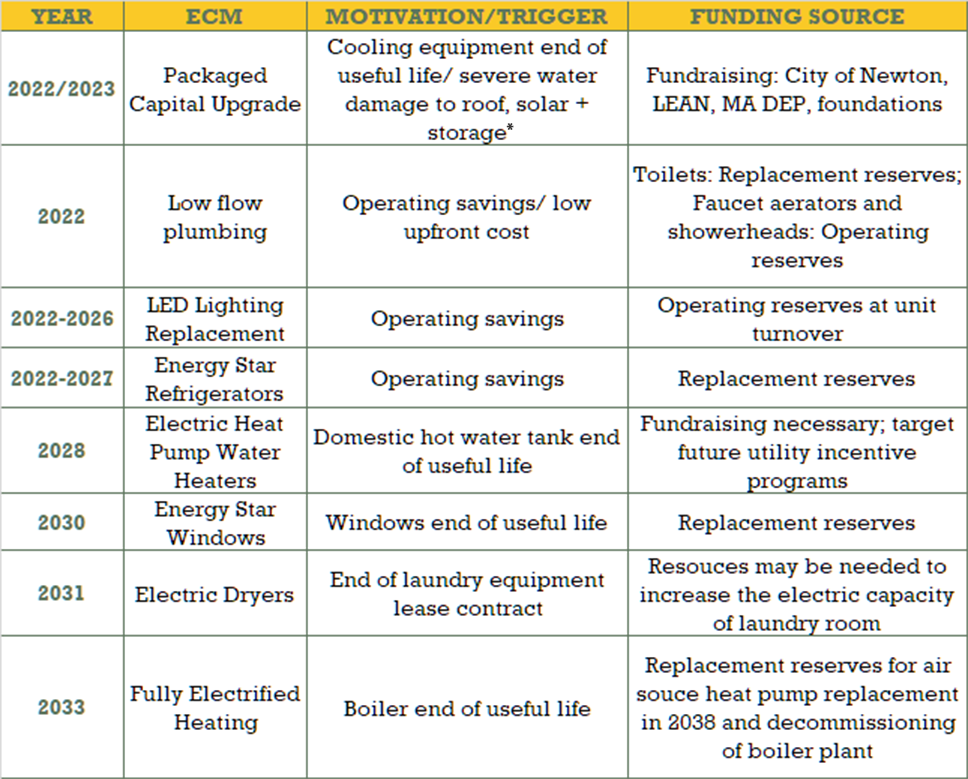
Assuming sufficient funding can be found for implementation of measures that are currently not resourced, strategic deployment of these energy conservation, renewable energy, and systems electrification measures will ensure that affordability can be maintained over time as this property contributes to achievement of local and state-wide carbon neutrality goals.
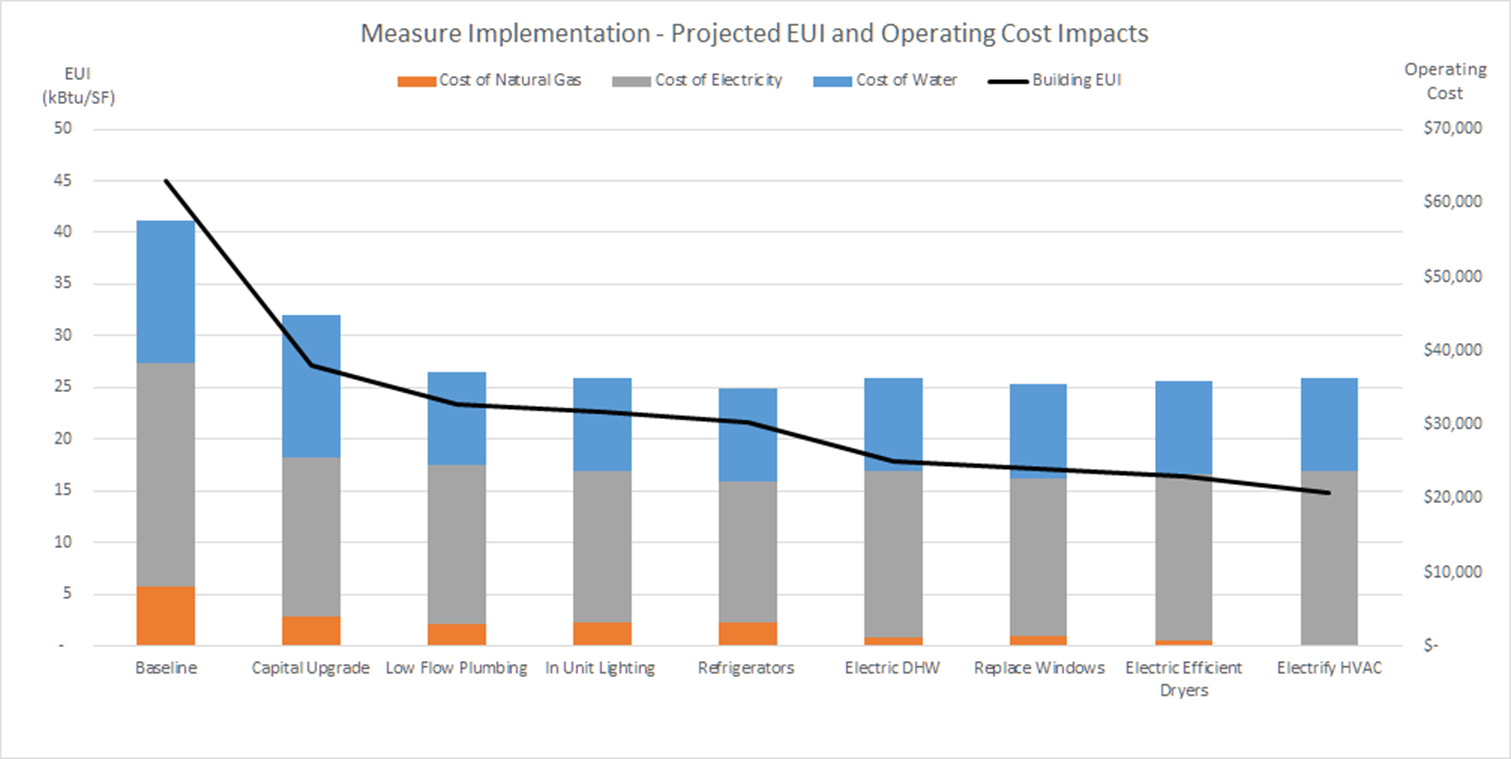
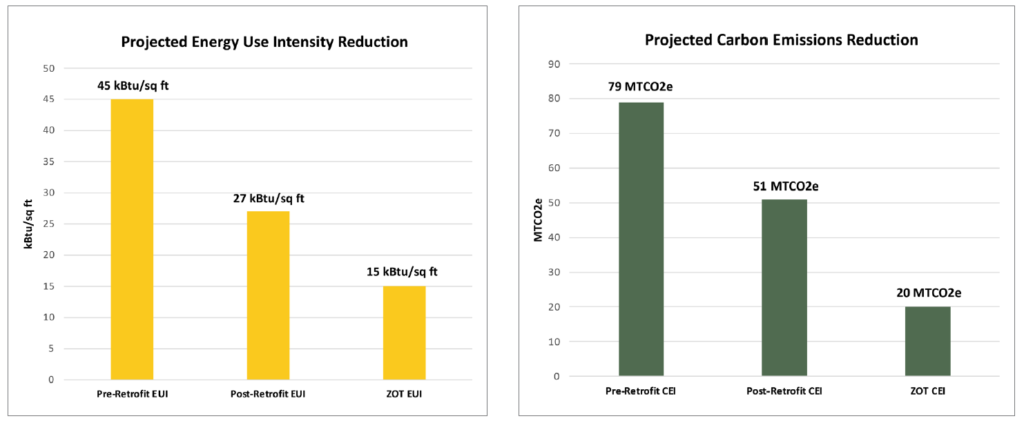
Note on graphs: Carbon emission calculated using the National Renewable Energy Laboratory (NREL) Cambium’s data (Electric) 2022 NREL Cambium Dataset – LRMER; NEWE Grid – Mid-case w/ 95% Decarbonization by 2050 Combustion + Precombustion.

